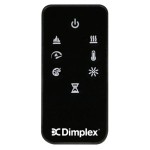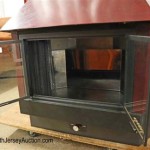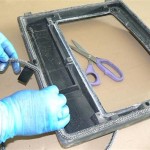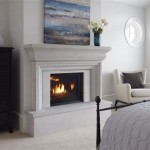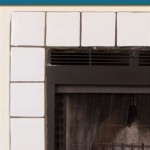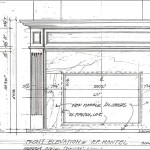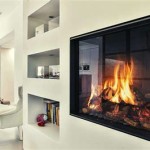Fireplace With Blower Fan: Enhancing Heating Efficiency and Comfort
Fireplaces have long been a focal point in homes, providing warmth and ambiance. While traditional fireplaces offer aesthetic appeal, their heating efficiency can be limited. To address this, many modern fireplaces incorporate a blower fan, significantly improving heat distribution and overall performance. This article explores the benefits, types, features, installation, and maintenance aspects of fireplaces equipped with blower fans, providing a comprehensive understanding of how they enhance the heating experience.
Understanding Fireplace Blower Fan Functionality
A fireplace blower fan, also known as a fireplace fan or a heat circulator, is a mechanical device designed to circulate warm air generated by the fireplace into the surrounding room. Traditional fireplaces primarily rely on radiant heat, which warms objects directly in front of the fire. This often results in uneven heat distribution, with areas closer to the fireplace becoming excessively warm while other parts of the room remain relatively cold. The blower fan circumvents this issue by actively drawing cool air from the room, passing it over the heated firebox, and then forcing the warmed air back into the room. This forced convection process facilitates a more even and consistent distribution of heat throughout the space.
The effectiveness of a fireplace blower fan stems from its ability to increase the surface area of the firebox that interacts with the air. By forcing air across the hot metal surfaces, the fan extracts more heat than would naturally occur through radiation and natural convection alone. This increased heat extraction translates to a noticeable improvement in heating efficiency, allowing the fireplace to warm a larger area more quickly and effectively. Moreover, the circulating airflow mitigates temperature stratification, preventing warm air from accumulating near the ceiling while the floor level remains cooler. This contributes to a more comfortable and uniform thermal environment within the room.
Fireplace blower fans are typically powered by electricity and are designed to operate quietly. They are often equipped with variable speed settings, allowing users to adjust the airflow and heat output according to their preferences and the specific heating needs of the space. The placement of the blower fan is crucial to its effectiveness. It is usually located at the base of the fireplace or within a designated compartment, ensuring that it can effectively draw in cool air and expel warmed air into the room. Some models are also designed to be retrofitted into existing fireplaces, offering a convenient upgrade for homeowners seeking to improve their fireplace's heating performance.
Types of Fireplace Blower Fans
Fireplace blower fans are available in various configurations, each designed to suit different fireplace types and installation requirements. Understanding the different types of blower fans is essential for selecting the optimal model for a specific fireplace and heating needs. Each type offers unique advantages and disadvantages in terms of performance, installation complexity, and noise levels.
Built-in Blower Fans: These blower fans are integrated directly into the fireplace unit during the manufacturing process. They are often designed specifically for a particular fireplace model, ensuring a seamless fit and optimal performance. Built-in blower fans typically offer the best balance of efficiency and noise reduction, as they are engineered to work harmoniously with the fireplace's design. They are commonly found in newer fireplace models, including gas fireplaces, electric fireplaces, and some high-efficiency wood-burning fireplaces. The primary advantage of a built-in blower fan is its streamlined integration, which minimizes visual clutter and ensures consistent performance. However, replacing a built-in blower fan can be more complex, often requiring specialized parts and professional installation.
Aftermarket Blower Fans: These blower fans are designed to be added to existing fireplaces as an upgrade. They are available in a variety of sizes and configurations to fit different fireplace models. Aftermarket blower fans offer a cost-effective way to improve the heating efficiency of an older fireplace without replacing the entire unit. These fans can be either universal or model-specific, with universal models offering greater flexibility in terms of compatibility. However, ensuring a proper fit and secure installation is crucial for optimal performance and safety. Aftermarket blower fans may also be slightly louder than built-in models, depending on their design and construction. When selecting an aftermarket blower fan, it is essential to consider the fireplace's dimensions, the availability of a power outlet, and the manufacturer's recommendations.
Hearth-Mounted Blower Fans: These blower fans are designed to sit on the hearth in front of the fireplace. They are typically portable and can be easily moved to different locations as needed. Hearth-mounted blower fans are a convenient option for fireplaces that are not easily retrofitted with internal blower fans. While they may not be as efficient as built-in or aftermarket models, they can still provide a noticeable improvement in heat circulation. Hearth-mounted blower fans are often equipped with adjustable settings, allowing users to customize the airflow and direction. They are generally less expensive than other types of blower fans, making them an accessible option for budget-conscious homeowners. However, they may be more visually obtrusive and less effective at distributing heat throughout the entire room.
Key Features and Considerations When Selecting a Fireplace Blower Fan
Choosing the right fireplace blower fan requires careful consideration of several factors, including the fireplace type, room size, desired heat output, noise level, and budget. Evaluating these features and considerations will ensure that the selected blower fan effectively meets the homeowner's specific needs and preferences.
Airflow Capacity (CFM): The airflow capacity of a blower fan, measured in cubic feet per minute (CFM), indicates the volume of air that the fan can move per minute. A higher CFM rating generally translates to greater heating efficiency and the ability to warm a larger space. When selecting a blower fan, it is essential to consider the size of the room that needs to be heated. A blower fan with insufficient CFM may not be able to effectively circulate warm air throughout the entire room, while a blower fan with excessive CFM may be unnecessarily powerful and noisy. Manufacturers often provide recommendations for the appropriate CFM range based on room size and fireplace type.
Noise Level (Decibels): The noise level of a blower fan is an important consideration, especially for homeowners who value a quiet and comfortable environment. Blower fans can produce varying levels of noise, depending on their design, construction, and operating speed. Lower noise levels, typically measured in decibels (dB), are generally preferable. Look for blower fans that are specifically designed for quiet operation, often featuring features such as vibration dampening and optimized fan blade designs. Reading customer reviews and product specifications can provide valuable insights into the noise level of different blower fan models. Variable speed settings can also help to mitigate noise, allowing users to reduce the fan speed when maximum airflow is not required.
Variable Speed Control: Variable speed control allows users to adjust the airflow and heat output of the blower fan. This feature provides greater flexibility in managing the heating needs of the room and can also help to reduce noise levels. Some blower fans offer multiple speed settings, while others feature continuously adjustable speed controls. Variable speed control is particularly useful in situations where the heating demand fluctuates, such as during different times of the day or in response to changing weather conditions. It also allows users to fine-tune the airflow to achieve the desired level of comfort without overheating the room.
Thermostat Control: Some fireplace blower fans are equipped with a thermostat control, which automatically regulates the fan's operation based on the temperature of the firebox. The thermostat turns the fan on when the firebox reaches a certain temperature and turns it off when the fire cools down. This feature helps to prevent the fan from running unnecessarily and ensures that it only operates when it can effectively circulate warm air. Thermostat control can also extend the lifespan of the blower fan by reducing its overall operating time. It is a convenient and energy-efficient feature that simplifies the operation of the fireplace and enhances its overall performance.
Installation and Maintenance: The ease of installation and maintenance are important considerations when selecting a fireplace blower fan. Built-in blower fans are typically installed during the manufacturing process and require professional installation. Aftermarket blower fans may be easier to install, but it is still essential to follow the manufacturer's instructions carefully to ensure a proper and safe installation. Regular maintenance, such as cleaning the fan blades and vents, is necessary to ensure optimal performance and prevent the accumulation of dust and debris. Some blower fans feature removable components for easy cleaning, while others may require more specialized maintenance procedures. Consider the availability of replacement parts and the cost of professional maintenance services when making a selection.
By carefully considering these features and considerations, homeowners can select a fireplace blower fan that effectively enhances the heating efficiency and comfort of their fireplace, creating a warm and inviting atmosphere in their homes.

Fireplace Efficiency Blowers And Why You Should Have One

Why Should I Get A Fireplace Blower For My Masonry

Noisy Gas Fireplace Blower Here S How To Replace It Diy

Fireplace Blowers Explained How Fans Work Regency

Why Do I Need A Blower Fan On My Fireplace We Love Fire

Installing A Fireplace Blower Gfk4 Gfk4a In Heatilator Natural Gas

How To Replace Your Rsf Fireplace Blower Fan

Fireplace Blower Fans What You Need For Heat Full Service Chimney

Why Do I Need A Blower Fan On My Fireplace We Love Fire

Linear Direct Vent Complete Low Profile Design 35 Fireplace With Blower Fan And Multi Function Remote Drl3535 F4183 F4896

